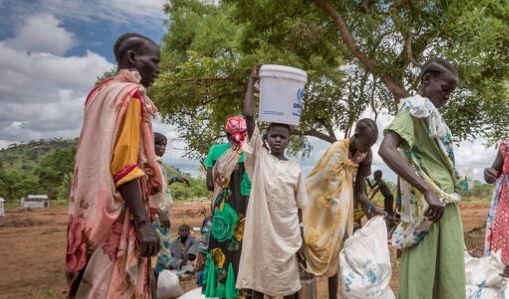West and Central Africa Challenged by increased food insecurity

High food prices, limited healthcare access, and inadequate diets have mainly led to acute malnutrition in children under 5, adolescents, and pregnant women. In parts of northern Nigeria, the prevalence of acute malnutrition in women aged 15-49 years is nearly 31%. Meanwhile, Mali is facing the worst situation, with an estimated 2,600 people presumed to be experiencing catastrophic hunger.
Malnutrition in West and Central Africa has increased to a significantly high rate with 16.7 million children under five experiencing acute malnutrition. More than two thirds of households are struggling to afford healthy diets and eight out of 10 children at the age range of 6-23 months don’t have access to foods essential to their optimal growth and development.
According to the UN World Food Program (WFP), almost 55 million people are facing further food and nutrition insecurity in West and Central Africa during the region’s three-month lean season from June through August, which is a four million increase in the number of people currently dealing with food insecurity in that region.
High food prices, limited healthcare access, and inadequate diets have mainly led to acute malnutrition in children under 5, adolescents, and pregnant women. In parts of northern Nigeria, the prevalence of acute malnutrition in women aged 15-49 years is nearly 31%. Meanwhile, Mali is facing the worst situation, with an estimated 2,600 people presumed to be experiencing catastrophic hunger.
The latest data also highlight a considerable shift in the factors exacerbating food insecurity in the region, beyond recurring conflicts. Economic problems, including currency devaluations, increasing inflation, stagnating production, and trade challenges have exacerbated the food crisis, imposing adverse impacts on ordinary people across the region with Nigeria, Ghana, Sierra Leone, and Mali being among the worst affected.
On the one hand, West and Central Africa remain heavily dependent on imports to meet the population’s food needs, while on the other hand, import bills continue to rise due to currency depreciation and high inflation. Meanwhile, cereal production for the 2023-2024 agricultural season has shown a deficit of 12 million tons, while the per capita availability of cereals has been down by 2% compared to the last agricultural season.
According to FAO Sub-Regional Coordinator for West Africa and the Sahel, Dr. Robert Guei, it is critical to mobilize for the promotion and support of policies that can encourage the diversification of plant, animal, and aquatic production and the processing of local foods to respond to the unprecedented food and nutrition insecurity in the region.
This way, healthy and affordable diets can be ensured all year round while also protecting biodiversity and mitigating the effects of climate change. Governments and the private sector need to collaborate to ensure that the fundamental human right to food is upheld for all by implementing sustainable solutions that reinforce food security, consolidate agricultural productivity, and alleviate the detrimental effects of economic volatility.

